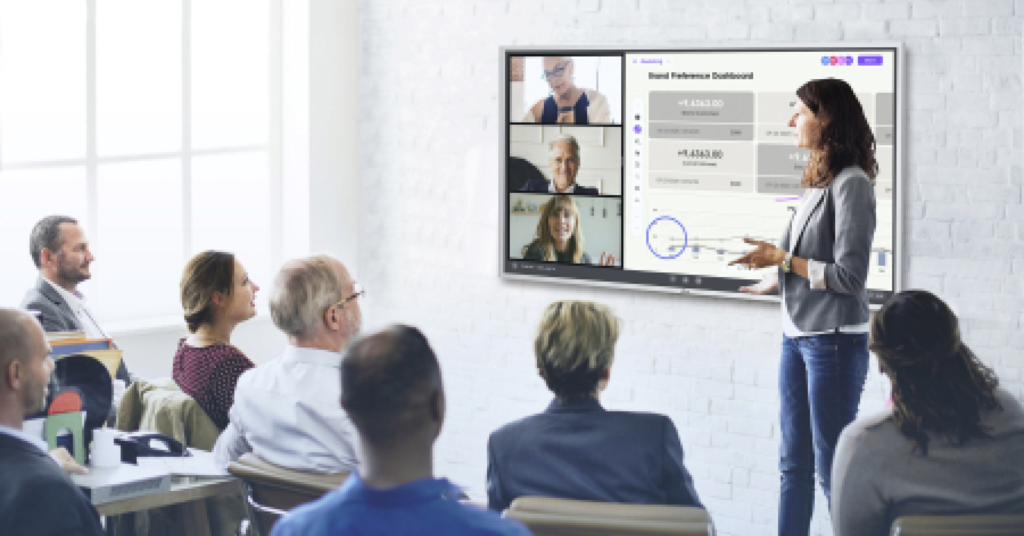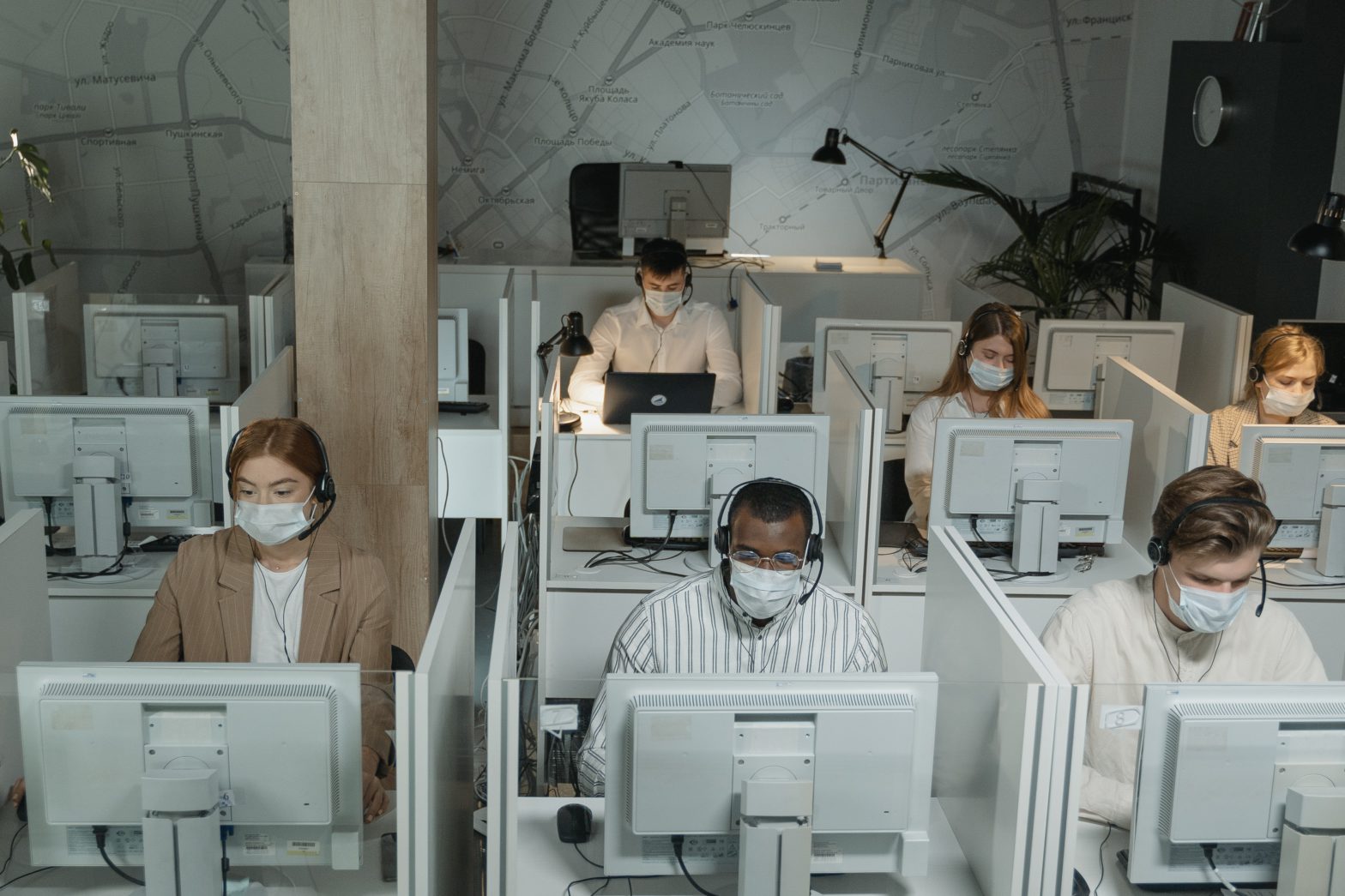What will the office of the future look like? With remote and hybrid work models becoming more of a permanent fixture for many industries, updates to office design will certainly need to be made to adapt to modern needs and expectations.
Expectations of flexibility and comfort in the workplace have already evolved rapidly following an unprecedented number of employees discovering the benefits of working from home. For employers, this presents a major opportunity to stand out, adapt and attract the best talent around with office setups that cater to a workforce with new needs and preferences.
The prospect of introducing high-tech collaboration tools and innovative changes to in-person workspaces has us eager to explore what might be ahead for the new-age office. Here are ten of the most intriguing updates you might consider making to keep employees happy and engaged in your workplace:
1. More Comfortable, More Adaptable Office Design and Furniture
It’s probably going to take more than a well-stocked cereal cupboard in a shared kitchen to get people excited for a return to the office. One of the most noticeable changes you can expect in the coming years is the increasing use of smart office furniture.
You’re likely familiar with ergonomically designed chairs and standing desks. These furniture innovations are just the beginning. Smart office furniture of the near future is likely to become more easily adaptable to various needs (individual work, team collaboration), which likely means farewell to the uncreative and uncollaborative cubicle neighborhoods of decades past (they won’t be missed).
You can also expect to see the words “modular” and “agile” a lot more in the future as offices leave static setups behind in favor of spaces that can quickly accommodate ever-changing requirements.
2. Tools and Tech Built to Collaborate

How will offices cater to both in-person employees and those taking advantage of hybrid or fully-remote models? We can think of one obvious place to start. Smartboards are primed to become a foundational tool of the modern office.
Smartboards facilitate more engaging meetings and more memorable presentations with integrated videos, apps and interactive components, allowing team members to highlight and markup with information from their own screens. Presenting important information through these interactive elements not only aids in holding a group’s attention, it also helps the information “stick.”
Smartboards were engineered specifically to facilitate remote collaboration. Individual work can be made instantly accessible by everyone in real-time (no more worrying about working off of an outdated file) and is safely stored in the cloud for future use. Cloud storage also makes smart boards a valuable gateway to safely accessible data for at-home workers. Being able to quickly save or download task notes from a smartphone is an efficient way to keep teams on track and informed and prevents the accidental erasure of important notes and updates.
Read more about how one hybrid team uses a Vibe Smart Whiteboard to improve their internal and client-facing communication in this case study.
{{< blog/cta-download-new content="Future of Work" extra="false" pdf="https://vibe.us/pdf/future-of-work-ebook/?utm\_campaign=office-design-updates&utm\_medium=blog&utm\_source=blog" >}}
3. Workstations Designed to Make Work Feel More Like Home
Standing desks and ergonomic chairs have been commonplace for a few years now, but we’ve encountered a whole new level of comfort and choice working from home. Should I work at my desk, on the couch, or even in bed? Elastic waistband again today? You bet.
With the entire office design now under careful scrutiny, it’s pretty obvious businesses can do better at creating comfortable, creative work atmospheres.
What’s fun about making workstations feel more like home is there’s already a wealth of information on the subject of what makes homes feel comfortable. Add softer lighting, wall texture or art, a comfy couch, heck don’t be afraid to buy a rug if you’ve got the space for it. Elements that make an office feel more like home will go a long way toward navigating the uncertain future of physical office spaces.
4. Places to Relax
We’ll get to how to fix break rooms in a moment, but this isn’t that. A space designed for exercise, yoga, meditation or simply some much-needed fresh air needs to play a role in any human-centered office design. In the design world these are called still spaces, and they’re exactly what they sound like — a quiet place to think.
Many companies are already in tune with the need for a readily-accessible space designed specifically for employees to decompress. While these quiet spaces can take on many forms (indoor, outdoor, soundproofed and secluded, open and airy …), they represent a need for peaceful escapes even from the most comfortable, most modernized office.
5. Better Multi-Purpose Rooms
Oh, the break room. Long has it stood as the lone getaway from the desk chair, if only for 15 minutes at a time. It’s also not always in line with what employees really need, and that’s something the modern office plans to fix.
In its simplest form, a break room can be any room free of a work screen and spreadsheets. They can house TVs, ping pong tables, sets of legos, Mario Kart — pretty much anything to serve as a mental break from the challenges of the workday. The most important component of the break room is tailoring it to specific employee needs. At the moment, that might mean touchless snack bars and other steps to facilitate a sanitary coexistence in the era of Covid-19.
6. More Colorful Office Design
Color psychology is real, and it has a significant impact on employee productivity and happiness. Did you know green is the easiest color on the eyes, and orange is known to create more social atmospheres? Why color everything taupe* when you can just as easily invest in some blues, yellows and greens for improved morale?
Let’s leave the drab color palette of pre-internet era offices in the past. Colorful office spaces can mitigate burnout, increase focus and generally make the office more of a joy to be in each day.
*why color anything taupe at all for any reason?
7. Employ the Latest VR Toys
No future trends article would be complete without at least a brief mention of virtual reality and the ways it might impact office work in the years ahead. For at-home workers, VR presents a chance to attend conferences, webinars and emergency birthday planning meetings through virtual reality. The tech is an important step in keeping remote teams bonded and already has businesses eager to experiment with training employees, connecting with customers and interviewing potential new hires remotely.
VR is also likely to grow into other time-saving tech tools, such as smart personal virtual assistants. The possibilities of advanced VR remain largely untapped, but are sure to play an important role in the future of office design.
8. An Increased Emphasis on Sustainability
So-called “green” offices were something of a nice perk in the past rather than a selling point. Now businesses can expect to miss out on 64% of the millennial workforce if they fail to institute legitimate social responsibility policies. Sustainability applies not only to the architecture and construction of future office buildings, but also the efficient use of materials, improved waste management and energy-saving measures available to current ones.
It’s worth noting one of the most important components of sustainability is the efficient use of space. A state-of-the-art office built sustainably can still serve as a net negative if entire floors sit empty — designing, building and using offices in the future will come with an increasingly strong directive to do so with a limited environmental footprint.
9. Offices Designed with Neurodiversity in Mind
The pandemic and its associated safety measures have businesses tearing down current office design and setups to accommodate employees today. This is big news for employees who have long coped with ADHD, dyslexia, autism and all other forms of neurodivergent conditions without the tools or spaces needed to perform their best work.
Designing offices with neurodivergent employees in mind might mean more attention to lighting, peripheral noise and office acoustics, clutter and cleanliness, fluctuating office temperatures and the availability of quiet rooms for conference calls or other focused tasks.
10. Coworking Spaces Will Bring Us All Back Together
The common thread binding each of these trends together is a pretty simple concept — businesses really need people to like being in the office. Office culture depends on coworkers collaborating, sharing best practices, developing new ideas and keeping each other motivated when obstacles arise.
As enjoyable as independent remote work can be for some, many employees will continue to crave a sense of community. Coworking spaces allow for a different type of community, one that isn’t necessarily composed of employees at the same company or working on the same project. Instead it presents a neutral office space for groups of independent workers to (somewhat counterintuitively) work together. Coworking spaces foster interpersonal relationships without long-term leases or the distractions of working from home and already represent a growing trend in the world of hybrid work environments.
